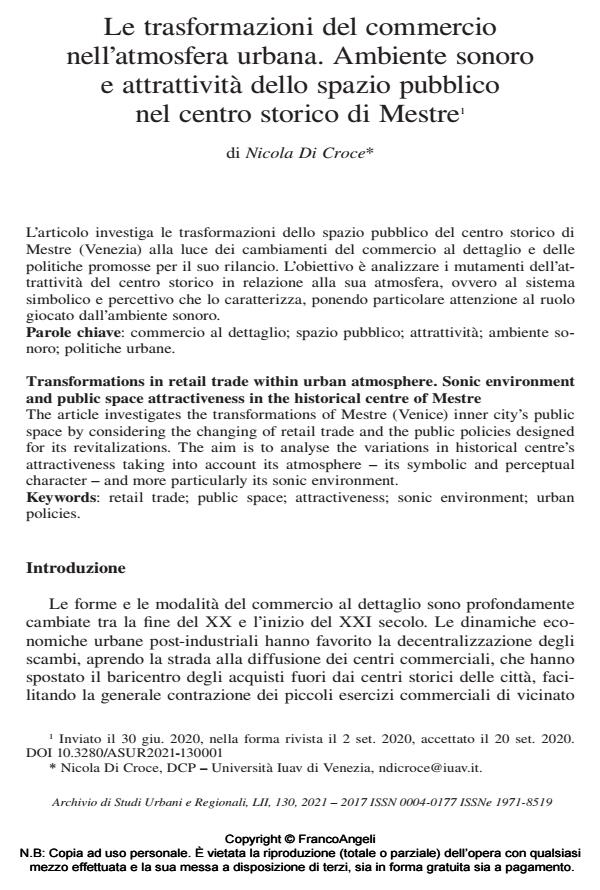Transformations in retail trade within urban atmosphere. Sonic environment and public space attractiveness in the historical centre of Mestre
Journal title ARCHIVIO DI STUDI URBANI E REGIONALI
Author/s Nicola Di Croce
Publishing Year 2021 Issue 2021/130
Language Italian Pages 22 P. 5-26 File size 182 KB
DOI 10.3280/ASUR2021-130001
DOI is like a bar code for intellectual property: to have more infomation
click here
Below, you can see the article first page
If you want to buy this article in PDF format, you can do it, following the instructions to buy download credits

FrancoAngeli is member of Publishers International Linking Association, Inc (PILA), a not-for-profit association which run the CrossRef service enabling links to and from online scholarly content.
The article investigates the transformations of Mestre (Venice) inner city’s public space by considering the changing of retail trade and the public policies designed for its revitalizations. The aim is to analyse the variations in historical centre’s attractiveness taking into account its atmosphere its symbolic and perceptual character - and more particularly its sonic environment.
Keywords: Retail trade; public space; attractiveness; sonic environment; urban policies.
- Into the Loop pp.79 (ISBN:978-1-4780-6170-0)
- Into the Loop pp.47 (ISBN:978-1-4780-6170-0)
- Into the Loop pp.133 (ISBN:978-1-4780-6170-0)
- Into the Loop pp.111 (ISBN:978-1-4780-6170-0)
- Into the Loop pp.15 (ISBN:978-1-4780-6170-0)
- Into the Loop pp.1 (ISBN:978-1-4780-6170-0)
- How do urban policies shape atmosphere? A multimethod inquiry of the sonic environment Nicola Di Croce, Edda Bild, in Urban Research & Practice /2024 pp.416
DOI: 10.1080/17535069.2023.2232344 - Into the Loop pp.177 (ISBN:978-1-4780-6170-0)
- Into the Loop pp.135 (ISBN:978-1-4780-6170-0)
Nicola Di Croce, Le trasformazioni del commercio nell’atmosfera urbana. Ambiente sonoro e attrattività dello spazio pubblico nel centro storico di Mestre in "ARCHIVIO DI STUDI URBANI E REGIONALI" 130/2021, pp 5-26, DOI: 10.3280/ASUR2021-130001